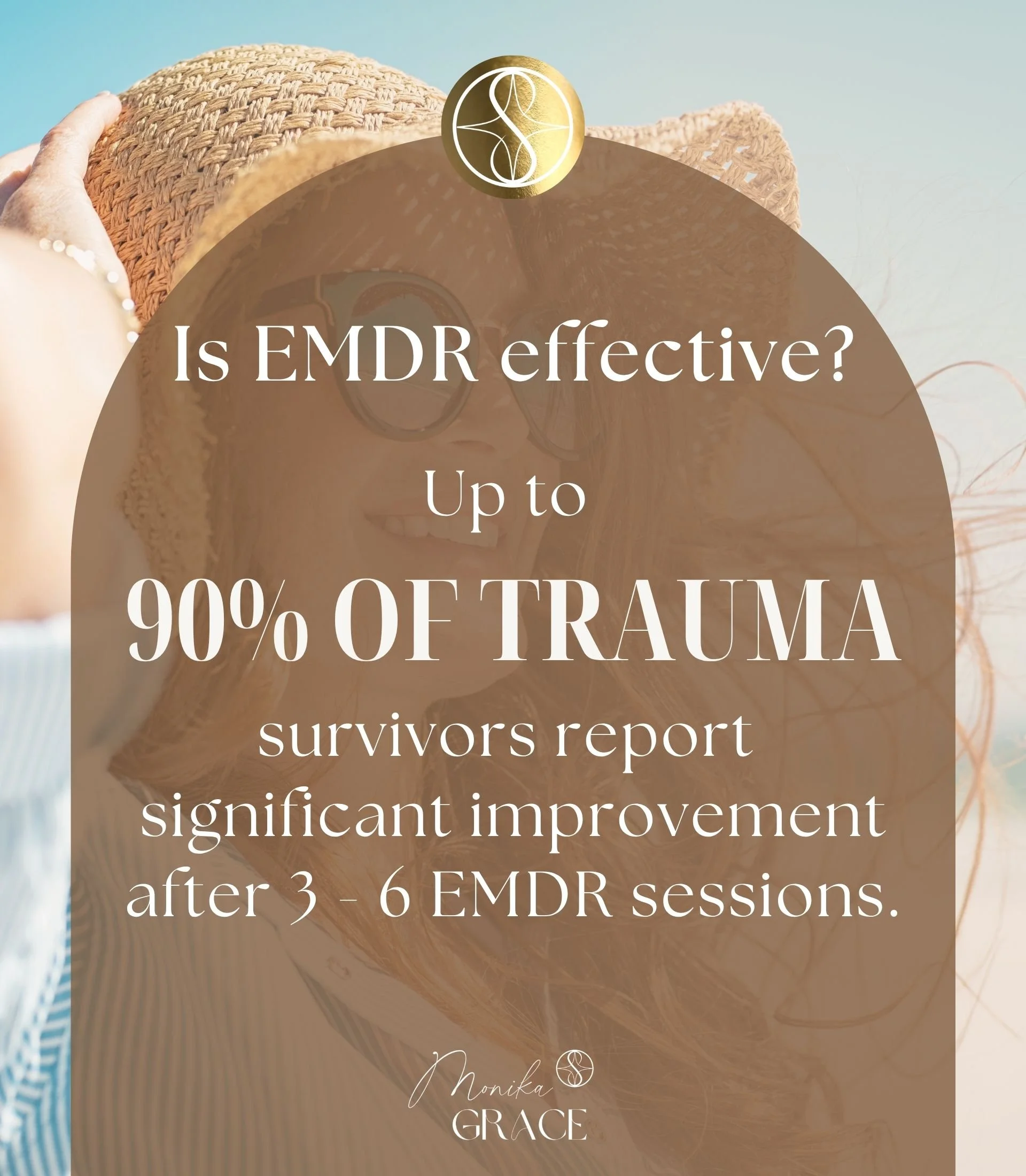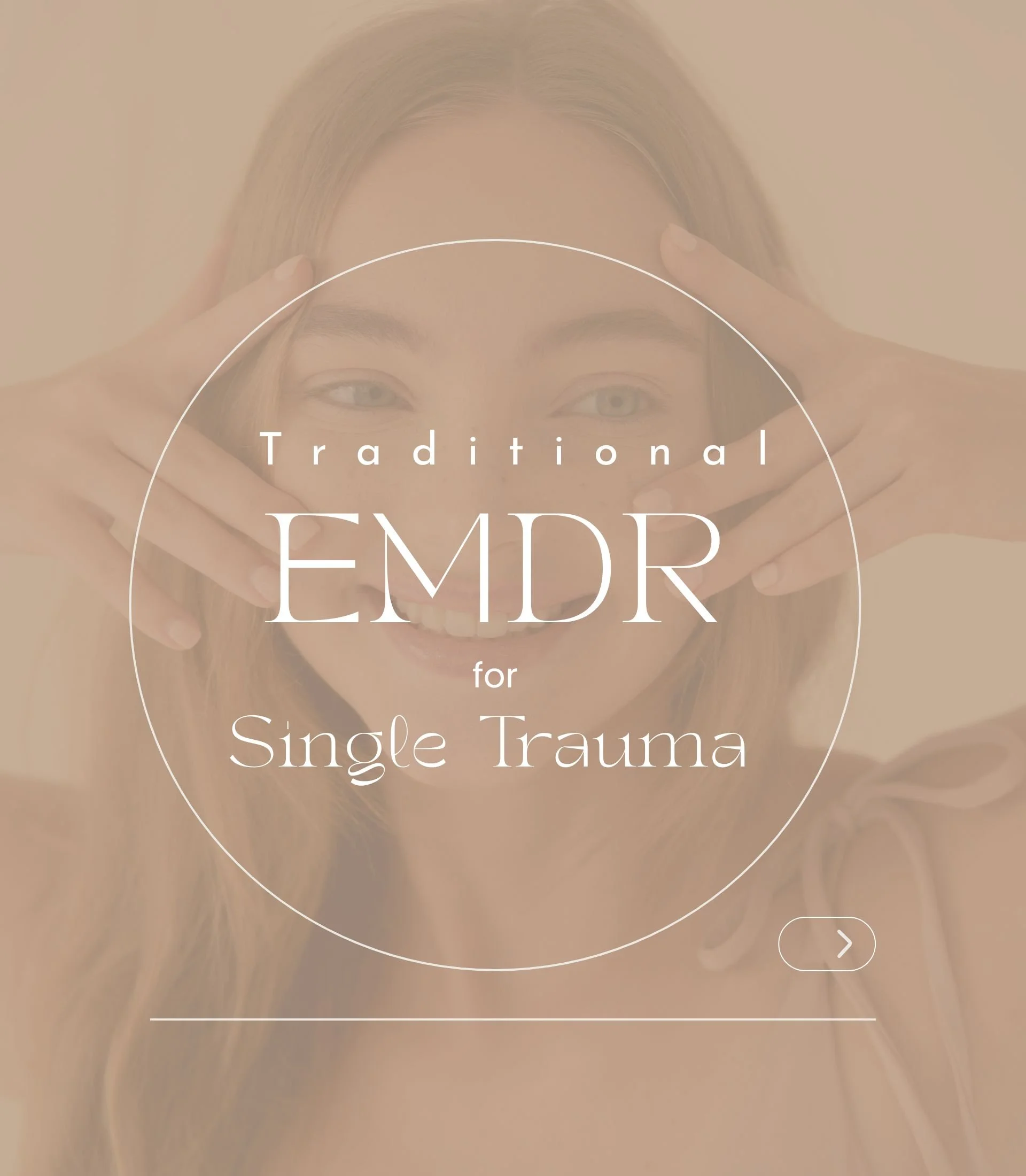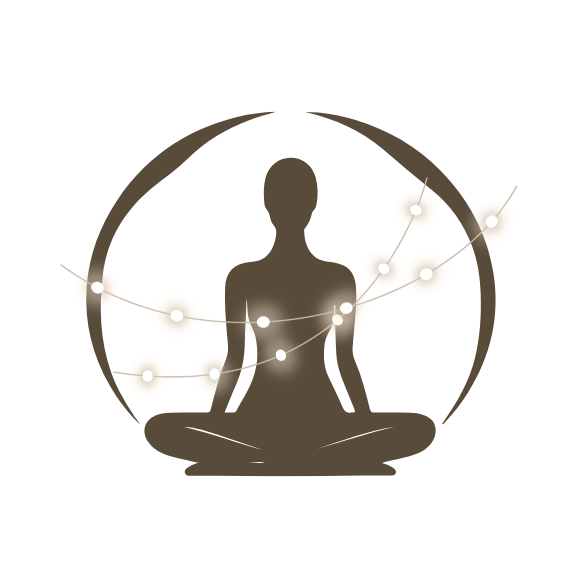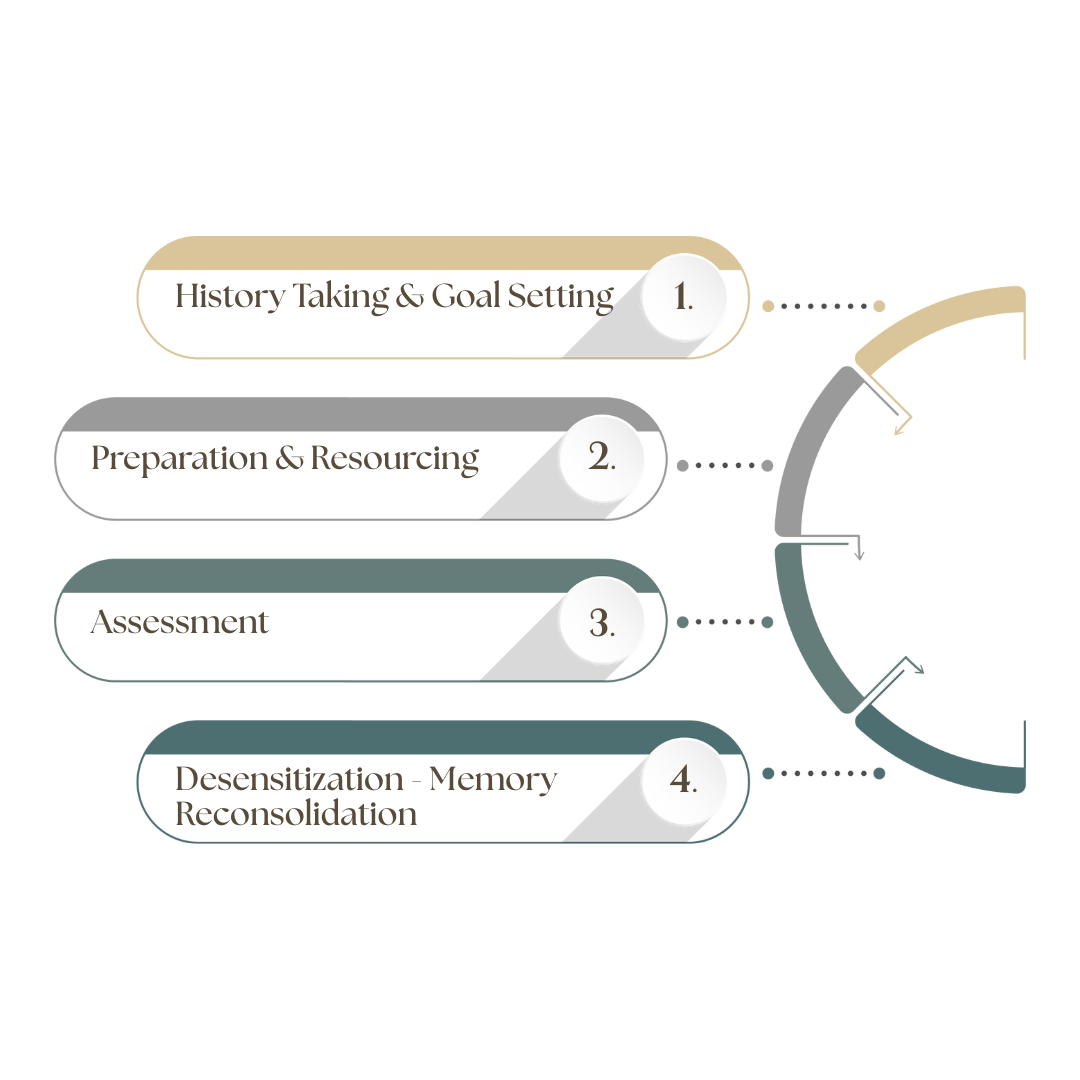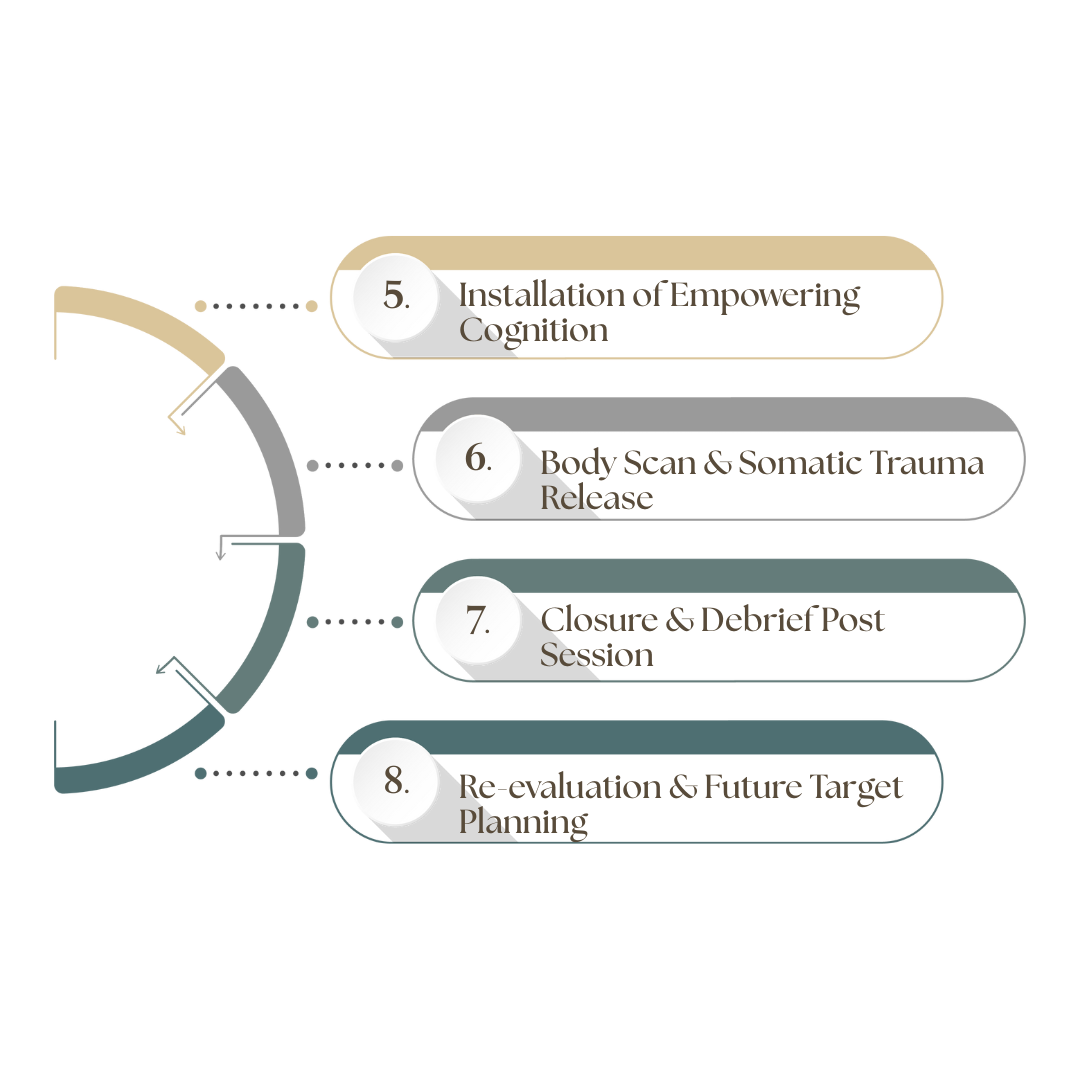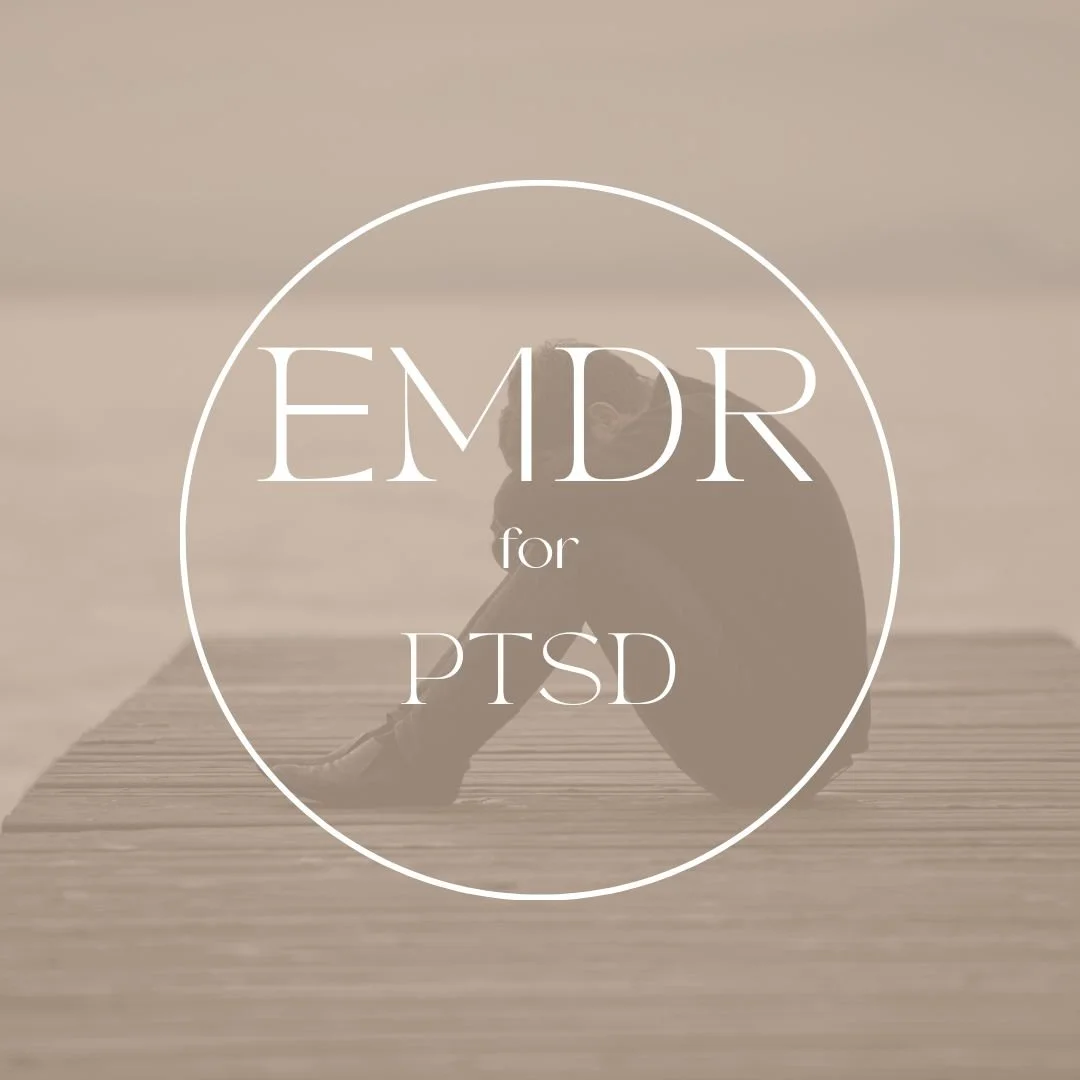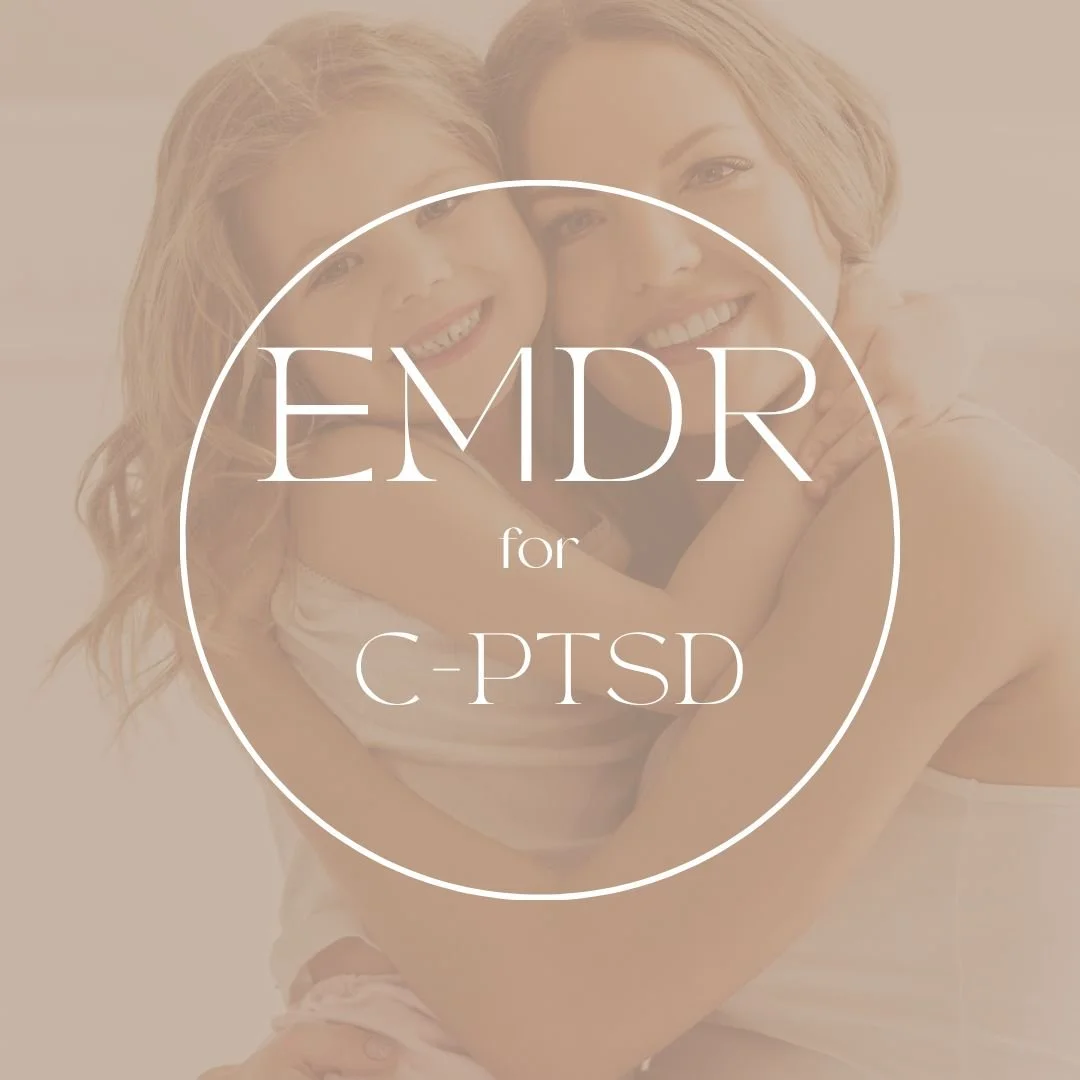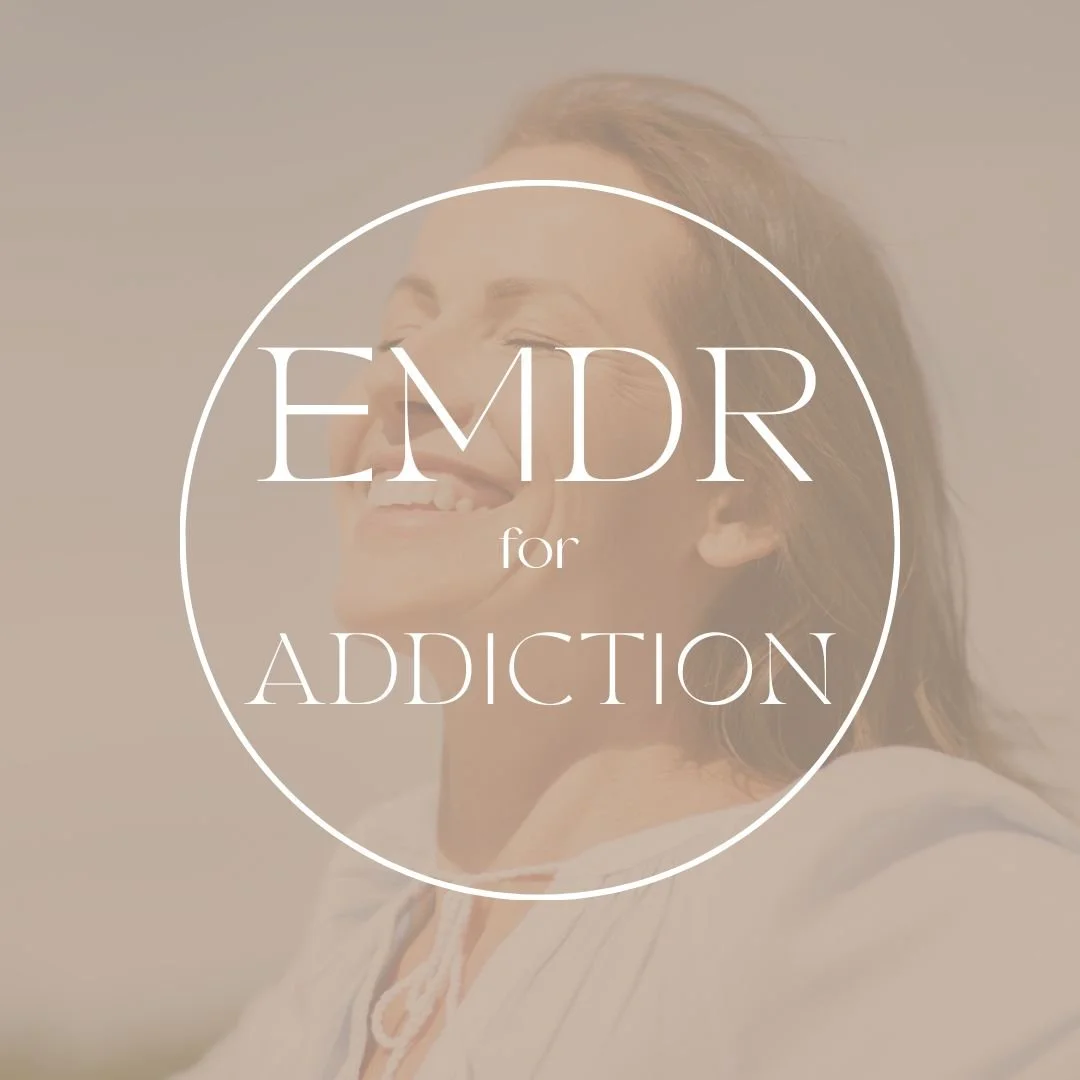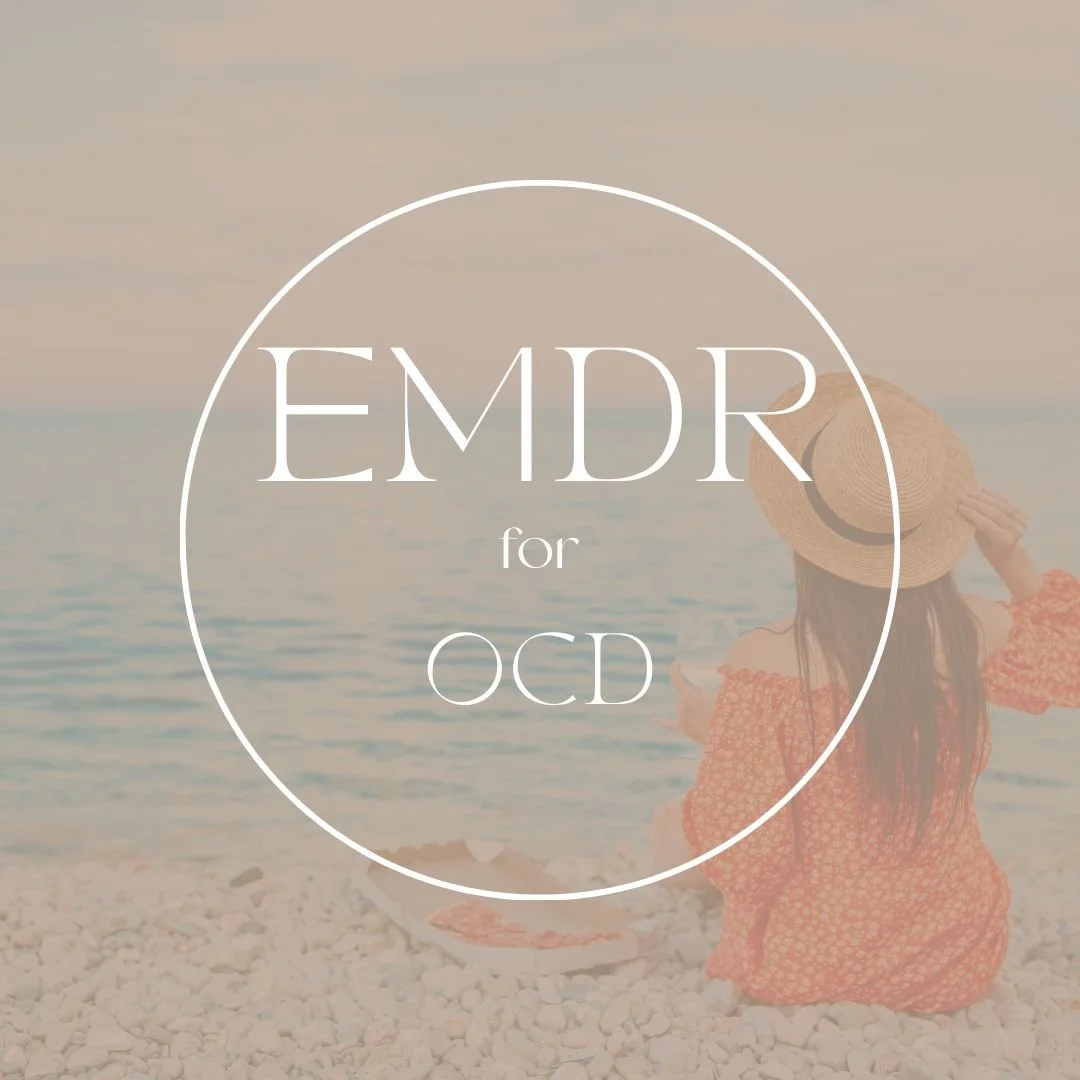
EMDR
therapy
Heal the Past - Live Freely
EMDR (Eye Movement Desensitization and Reprocessing) Therapy helps you release the hold of traumatic memories, negative beliefs, and emotional pain - so you can feel calm, safe, and empowered in your life.

Accelerate
Trauma Healing
EMDR (Eye Movement Desensitisation and Reprocessing) was developed by Dr. Francine Shapiro in the late 1980s. She discovered that certain types of side-to-side eye movements could help people process distressing memories in a new way - reducing their emotional intensity and lingering impact.
The main purpose of EMDR is to help people heal from the emotional wounds of traumatic or disturbing life experiences. Unlike traditional talk therapy, which focuses on analyzing or narrating past events, EMDR directly targets how traumatic memories are stored in the brain and body.
Trauma can leave memories feeling "frozen in time," with all their original fear, shame, pain, or helplessness. EMDR helps the brain reprocess these memories so they can be integrated as just memories - no longer triggering overwhelming emotions or reactions.
By using structured phases and gentle bilateral stimulation, EMDR allows the nervous system to safely digest past trauma. This leads to lasting relief, greater emotional regulation, and the ability to live more freely in the present.
Whether someone has experienced a single traumatic event or years of complex, developmental trauma, EMDR offers a deeply transformative path to healing at the root.
All You Need to
Know About EMDR
What is EMDR?
EMDR (Eye Movement Desensitization and Reprocessing) is one of the most effective science-backed therapies for processing and releasing unprocessed traumatic memories that are stored in the nervous system.
It helps individuals rapidly reprocess distressing experiences, reducing the emotional charge and transforming the way the traumatic memory is held in the brain, offering rapid relief from fear, terror and emotional pain.
Who It’s For:
Ideal for individuals who experience intrusive thoughts, flashbacks, emotional overwhelm, or physical symptoms triggered by past experiences. If you feel “stuck” in cycles of fear, distress, or avoidance, EMDR can help you break free.
What It Does:
Through bilateral stimulation (eye movements, tapping, or auditory tones), EMDR activates the brain’s natural healing processes, helping rewire traumatic memories so they no longer trigger distress. This allows for a profound sense of emotional freedom, often in fewer sessions than traditional talk therapy.
Why Use EMDR?
1. To Process Childhood Trauma or Neglect
Use case: Emotional neglect, abuse, or feeling unseen/unwanted as a child
What to process: Flashbacks, feelings of worthlessness, unmet emotional needs
Results: Relief from old emotional pain, stronger sense of self-worth and safety
2. To Heal PTSD or Complex Trauma
Use case: Car accidents, medical trauma, assault, prolonged abuse, trauma from natural disasters
What to process: Intrusive memories, hypervigilance, freeze/fawn responses
Results: Nervous system regulation, fewer triggers, restored inner calm
3. To Release Limiting Beliefs from Core Wounds
Use case: “I’m not enough,” “I’m a burden,” “I’m unsafe”
What to process: Root memories and internalized beliefs from painful experiences
Results: Empowered mindset, new self-perception, emotional freedom
4. To Address Anxiety Rooted in the Past
Use case: Social anxiety, panic, fear of abandonment or rejection
What to process: Early life events that wired the nervous system for fear
Results: Greater confidence, emotional resilience, deeper self-trust
5. To Support Inner Child & Attachment Healing
Use case: Feeling unloved, clingy, anxious, or emotionally disconnected
What to process: Attachment ruptures and unmet needs
Results: Reconnection with the inner child, deeper capacity for love and connection
Key Benefit:
✔ Rapid trauma processing without excessive talking or emotional overwhelm.
When to Use It:
The traditional EMDR protocol is great for resolving single-incident or complex trauma that remains emotionally charged.
The Attachment-focused EMDR protocol is great for healing relational wounds from earlier life e.g. abandonment, bullying, abuse, rejection, neglect, anger, or others.
Addressing intrusive thoughts, flashbacks, or nightmares.
Healing deeply conditioned fears, phobias, and specific anxieties.
Releasing self-limiting beliefs rooted in past traumatic experiences.
Breaking free from unhealthy patterns rooted in early life experiences.
Reducing emotional distress around specific events without over-exploring the details.
How Quickly Can You See Results?
Many clients experience significant relief within just a few sessions, often reporting that previously overwhelming memories become emotionally neutral, allowing them to move forward with clarity and confidence.
Most clients notice a shift within 1-3 sessions, with significant relief often experienced within 6-12 sessions for single-event trauma. For complex trauma, EMDR offers deep transformation over several months but at a much faster rate than traditional talk therapy because the changes happen somatically inside the brain, body and memory.
Best For:
✔ Rapid trauma resolution, Breaking emotional triggers
✔ PTSD & C-PTSD
✔ Childhood trauma & abuse, distressing memories
✔ Anxiety, phobias, & panic disorders, intrusive thoughts, and Addictions
✔ Grief & loss
✔ Performance anxiety & self-doubt
✔ Chronic pain related to trauma
✔ Attachment wounds & relationship trauma

✔ Accelerates healing of emotional pain
✔ Doesn’t require reliving traumatic memories in detail
✔ Gets to the root - not just the symptoms
✔ Builds emotional resilience and internal safety
✔ Backed by over 30 years of research
✔ Recommended by the APA (Australian Psychological Society)
Why Clients
Choose EMDR?
Types of
EMDR I offer
1. Standard
EMDR Protocol
Structured, 8-phase model.
Ideal for single-incident traumas or clear traumatic memories.
Structured and efficient reprocessing.
Fast processing when safety and stability are present (typically used with clients with little trauma)
EMDR is recognised by the ISTSS - International Society for Traumatic Stress Studies, World Health Organization, APA - Australian Psychological Society as a gold-standard treatment for PTSD and trauma.
2. Attachment-
Focused EMDR
Designed for complex trauma and relational wounds.
Emphasises preparation, safety, and the therapeutic relationship.
Respects attachment injuries and developmental wounds.
Integrates resourcing, parts work, and nervous system regulation.
Builds safety and trust for those with abuse, neglect, or disorganised attachment.
Incorporates somatic work, parts work (IFS-informed), and slower deeply attuned pacing.
Supports healing of attachment injuries with attuned, compassionate care.
Why
Attachment-Focused EMDR
is Ideal for Complex Trauma?
Attachment-Focused EMDR was developed specifically to address these needs.
It prioritizes the therapeutic relationship as a secure base.
It honors developmental trauma by recognizing how early relationships shaped self-worth, trust, and emotional safety.
Processing is slower, gentler, and more collaborative.
Attachment-Focused EMDR doesn’t sacrifice the power of EMDR - it simply adapts it.
Instead of racing through memories, it helps survivors feel:
Seen, Heard, Respected, In control of their pace, Safe enough to truly let go
It incorporates resourcing, self-soothing, and relational repair.
It’s informed by polyvagal theory and parts work - so it helps clients stay connected to themselves even while processing difficult material.
Bottom Line
✔ Traditional EMDR’s faster BLS is highly effective for single-event trauma, where the system can tolerate quick processing.
✔ For complex trauma survivors, whose histories often include chronic betrayal, neglect, and emotional injury, this approach can be too activating and feel chaotic or even re-traumatizing.
✔ Attachment-Focused EMDR meets Complex trauma survivors with the presence and deep attunement they need to establish safety and activate the required resources.
✔ Attachment-Focused EMDR recognizes that real healing happens not through force, but through attunement, safety, and compassionate, present-moment connection.
The Phases of
EMDR Therapy
EMDR is a structured, safe,
8-phase approach
I will safely guide you through each stage with presence and compassion
History Taking & Goal Setting – We explore your story, goals, and readiness for EMDR.
Preparation – We build safety, you learn self-regulation and coping skills to feel grounded and safe.
Assessment – We identify specific memory targets and associated core beliefs.
Desensitization – Using bilateral stimulation, we reduce the emotional intensity of the distressing memory network.
Installation – We strengthen a positive, empowering core belief about yourself.
Body Scan – We ensure the trauma is released from the body by clearing residual somatic distress.
Closure – We debrief and re-ground after each session.
Re-evaluation – We check in and reassess ongoing progress + plan next targets.
Attachment-Focused EMDR emphasizes extra resourcing, slowing down, and relational safety to honor complex trauma.
Is EMDR
Effective?
EMDR has helped millions worldwide and is supported by hundreds of clinical studies. It is one of the most thoroughly studied trauma therapies. Many people experience a profound shift in just a few sessions. Benefits are durable over time.
Trauma Studies show:
90% of single-trauma clients show improvement after just 3 sessions (Shapiro, 1989)
77% of combat veterans no longer met PTSD criteria after 12 sessions (Carlson et al., 1998)
Attachment-focused EMDR in controlled studies showed reductions in anxiety, depression, PTSD, and improved self-esteem, emotion regulation, relational security, and overall functioning. Strong emerging evidence supports attachment EMDR for relational wounds and developmental trauma.
A meta-analysis of 10 studies with 561 participants found EMDR significantly reduced substance use disorder outcomes and also lessened PTSD and related depressive symptoms.
Preliminary case studies using adapted EMDR phobia protocols (14–16 sessions) achieved early and maintained symptom reduction, with Yale–Brown OCD scores dropping from extreme to mild/subclinical (70–80% reduction).
A meta-analysis of 17 trials (n = 647) reported EMDR was effective for both generalized anxiety disorders and specific panic, phobias, and somatic symptoms, showing rapid symptom relief.
Key Takeways from the
EMDR Efficacy Studies
EMDR is repeatedly shown to:
Produce large, clinically meaningful reductions in PTSD symptoms.
Often work faster than standard trauma-focused talk therapy.
Maintain gains over time.
Be well-tolerated even by diverse populations.
Show evidence of a specific mechanism (BLS reducing memory vividness/emotionality).
Links to the EMDR Efficacy Studies

Famous People Who
Recommend EMDR
Prince Harry – Spoke publicly about EMDR in his Apple TV+ series with Oprah Winfrey:

How to Know If EMDR is
Right for You?
EMDR may be the perfect fit if:
You’ve tried talk therapy but still feel emotionally stuck
You’re ready to face the past without being overwhelmed by it
You want deep, lasting change - not just coping
You feel like something is still “unfinished” in your healing
If you are struggling with:
✔ PTSD, C-PTSD, childhood trauma, or emotional neglect
✔ Feeling stuck in fight, flight, freeze, or fawn responses
✔ Chronic anxiety, depression, panic attacks, or nervous system dysregulation
✔ Emotional overwhelm, dissociation, or a lack of self-trust
✔ Deep attachment wounds, unhealthy relationship patterns, or self-sabotage
Ask yourself:
Do I feel stuck or hijacked by emotions from the past?
Am I tired of coping and ready to truly heal?
Do I want to stop looping in painful patterns or memories?
If you said yes to any of these, EMDR may be a powerful path forward.
Stories of
Transformation
I have seen great results on day 3! Life-changing!
The preparation was longer than expected, but I’ve learned a lot of great skills, so I now understand why that was needed. I have seen great results on day 3. It’s been life-changing to have relief from what used to terrify me.
Thank you for this!
Ari, Brisbane, QLD, Australia
Amazing! Love the results, thank you!
I had spent most of my life in and out of different types of therapy, until I found Monika and experienced the EMDR work.
The changes in my behaviour have been undeniably powerful and truly awesome. Where I previously felt constantly on edge and triggered now feels calm and neutral. I still have a memory of what happened but it no longer drags me down like it used to.
Amazing! Love the results, thank you!
Tina, London, UK
I can't believe how quickly things shifted!
I can't believe how quickly things shifted. I’ve been in counselling for years, and didn’t have much hope anymore but reading about Attachment EMDR made me want to try it. It’s much better than the original version. It helped me feel free from my past in a way I never thought possible. Monika holds the safest, most empowering space I’ve ever experienced. I would definitely recommend her work to anyone with trauma, big or small. She really cares and you don’t get that from many psychologists.
Christel, Redland Bay, QLD

Book Your
EMDR Session Now
If you’re ready to heal, I’d be honoured to support you in your journey.
I currently offer online EMDR and Attachment-Focused EMDR sessions across Australia and globally.
Click below to schedule your free consultation and explore the best EMDR pathway for your healing.
You don’t have to keep carrying the weight of your past. Healing is possible. And it starts with reconnecting to your body, your emotions, and your true self.
If you have any questions,
please reach out via the contact form here
EMDR therapy Redland Bay, EMDR therapy Brisbane, Monika Grace EMDR therapist, Trauma therapy Redland Bay Brisbane, Attachment-focused EMDR Brisbane, Complex PTSD therapy Queensland, EMDR for childhood trauma Brisbane, Somatic EMDR therapy Queensland, EMDR therapy for anxiety Brisbane, EMDR trauma specialist Redland Bay Brisbane










